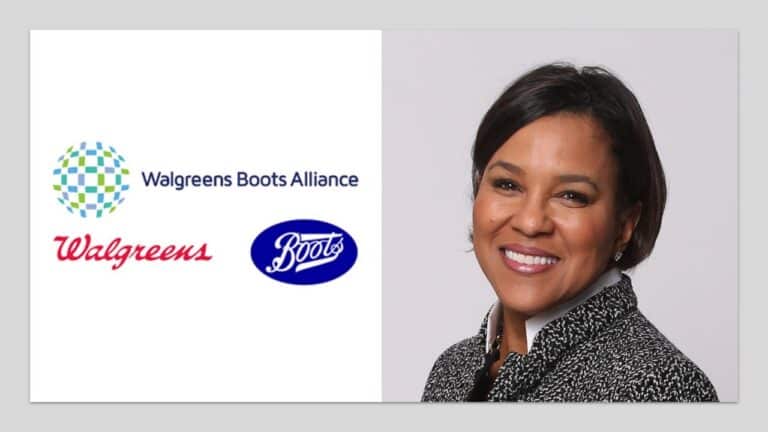If you believe there is strength in numbers, then the announcement that the two largest Upstate New York-based chains – Price Chopper (Market 32) and Tops Markets – have agreed to merge should be a positive and encouraging piece of news.
While the two regional chains, one based in Eastern New York (Price Chopper is headquartered in Schenectady) the other in the Western part of the Empire State (Tops is based in Williamsville), have each had their struggles in recent years, trade observers expressed confidence that a blending of the two retailers will give the combined organization greater leverage and scale in a very competitive and changing marketplace.
Several sources said that talks between both parties have been ongoing for about a year but began heating up late in 2020. As for the details: Scott Grimmett, Price Chopper/Market 32’s president and CEO, will be the new chief executive and serve on the board of directors of the new entity which will oversee the operations of the 292 Price Chopper, Market 32, Market Bistro and Tops Markets stores and collectively employ more than 30,000 associates. Our research indicates that annual sales at Tops are approximately $2.6 billion and $3.6 billion annually at Price Chopper. Financial terms of the deal were not disclosed.
Frank Curci, Tops Markets’ chairman and CEO, will become a board member of the newly created company and also serve as a consultant to assist in the transition.
Blaine Bringhurst, Price Chopper/Market 32’s executive VP of merchandising, marketing and store operations, will lead the Price Chopper/Market 32 business. John Persons, Tops Markets’ president and COO, will lead the Tops Markets’ business.
The new parent company will be headquartered in Schenectady, NY. The Price Chopper/Market 32 and Tops Markets businesses will retain main offices in Schenectady and Williamsville and will continue to be managed locally by their respective leaders.
“This merger marks a major step forward and collectively elevates our ability to compete on every level,” said Grimmett. “It leverages increased value for our customers; advances shared opportunities for innovation; fortifies the depth of our workforce, community and trade partnerships; and ultimately accelerates our capacity to deliver a distinctively modern and convenient shopping experience. Given the vital role that supermarkets and their workforces play in our communities, particularly this past year, I am excited to lead the parent company of these two historic grocery retailers.”
“We have long believed that this merger makes sense both strategically and based on the similar ways in which we each put customers first, go to market and treat our people,” said Curci. “We look forward to working closely with the Price Chopper/Market 32 team and together becoming an even stronger competitor with more scale, as we continue serving our customers and communities.”
In a message sent to Top’s “valued business partners,” Curci noted: “I am reaching out following the announcement that Tops Markets has agreed to merge with Price Chopper/Market 32 to make sure you understand what we announced and what it means for you. I want to assure you first and foremost that it is business as usual at Tops. We are continuing to work with you like we always have, and we are relying on you to continue supporting our programs. Your day-to-day contacts remain the same, and we expect a seamless transition for our suppliers. We are excited about what this announcement means for our business partners, customers, associates and communities. As you may know, Price Chopper/Market 32 is based in Schenectady, NY and operates 130 Price Chopper and Market 32 supermarkets and one Market Bistro in markets that are almost perfectly contiguous to ours. The new parent company will be headquartered in Schenectady, NY, and the Price Chopper/Market 32 and Tops Markets businesses will retain main offices in Schenectady and Williamsville and will continue to be managed locally by their respective leaders. This transaction nearly doubles our collective footprint in the Northeast, and the combined operations will include nearly 300 Price Chopper, Market 32, Market Bistro and Tops Markets stores and collectively employ more than 30,000 associates. We have long believed that this merger makes sense both strategically and based on the similar ways in which we each put customers first, go to market and treat our people. By joining forces, our merged companies are expected to be better positioned to compete and offer even more value and outstanding services to customers across the Northeast. While we are announcing the agreement today, we expect that the transaction will be completed in the coming months, subject to regulatory approval and customary closing conditions. Between now and then, and in many respects even after the merger is completed, we will continue to operate separate, independent companies and, as I mentioned, it is business as usual. We will continue to update you with additional information as we move forward. As always, if you have any questions, please reach out to your normal contact. We value our important relationship and we look forward to working closely with you into the future. Thank you for your continued support.”
Neil Golub, currently executive chairman of the board, and who for many years served as the face of Price Chopper, said, “I’ve seen tremendous change in our industry across my 65-year career and have long been an advocate for the promise of innovation and partnership, like that which has driven this merger forward. I can assure you that our commitment to sustaining and improving the communities in which we operate remains steadfast.”
“Tops has always put serving customers and providing an exceptional shopping experience at the center of everything we do, and this merger is no different,” said Persons. “Our associates, who take pride in their work and recognize the importance of the role they play in taking care of customers and communities, will continue to be the backbone of our company.”
The deal is expected to close in the next few months pending regulatory approval. In terms of store overlap, this appears to be a pretty clean deal with the Syracuse area being the highest store cluster of potential concern. Each retailer operates four stores in that Central New York market. The closest stores (within three miles) that could be of FTC interest are two Tops units in Syracuse (Nottingham Road and Shop City Plaza) and one in Dewitt (E. Genesee Street) which all could conflict with a single Price Chopper unit on Erie Boulevard in Syracuse. Other more isolated overlaps can be found in Cooperstown, NY; Cortland, NY; Lake George, NY; Owego, NY; Rutland, VT; and Gardner, MA.
Founded by brothers Bill and Ben Golub in 1932 (as Public Service Market, then later Central Market), Price Chopper/Market 32 currently has approximately 18,000 employees in New York, Vermont, Connecticut, Pennsylvania, Massachusetts and New Hampshire. The stores’ geography ranges from Sutton, MA (Market 32) to Liverpool, NY, a distance of approximately 280 miles on an east-west plane and from Massena, NY to Oxford, CT (Market 32), a distance of approximately 329 miles on a north-south plane.
Tops, whose roots date back to the 1920s, was officially incorporated in 1962 and was run for many years by Armand Castellani and Nino Nanula. It currently operates 162 stores (including five franchised units) in New York, Pennsylvania and Vermont and employs approximately 14,000 associates. The stores cover a wide geography ranging from Hoosick Falls, NY to Erie, PA (405) miles on an east-west plane and from Peru, NY (in the Adirondacks Mountains) to Meadville, PA, a distance of 485 miles on a north-south plane.
Both companies have faced management and financial challenges in recent years. Tops filed for Chapter 11 bankruptcy protection in February 2018, emerging nine months later with reduced debt (by about $300 million) and a more streamlined organization. As part of that reorganization, Tops renegotiated more favorable contracts from its two key labor unions – UFCW One which represents about 10,000 Tops associates at store level, and Teamsters Local 264 which represents approximately 600 warehouse workers and drivers at its distribution center in Lancaster, NY (while that facility is owned by Tops, C&S Wholesale Grocers provides distribution services to Tops’ stores).
In a statement released by Frank DiRiso, president of Oriskany, NY-based UFCW Local One after the merger agreement was announced, the veteran labor leader said: “UFCW Local One members from Tops Friendly Markets are not immune to changing management groups over the past 15 years. They have certainly been on a roller coaster ride hanging on in fear of what would happen to their job at each management milestone. Through all these changes of management, a bankruptcy and a global pandemic, our members have continued to provide their customers with superior service. Our members at Tops Friendly Markets are essential frontline workers, and as always Local One will continue to fight for our members jobs and their livelihoods. Our collective bargaining agreements are in full effect, and have years left before they expire. We will be bargaining with Tops on the Adirondack stores very soon and expect no issues. We will use every legal measure to make sure our members are treated fairly, and we look forward to working with the new management, as we always have, to ensure of members have stable employment.”
In its 2018 company restructure, Tops acquired five new investors who, post-bankruptcy, control more than 70 percent of the company’s $560 million in secured notes. Those investors are: Silver Point Capital, a Greenwich, CT-based hedge fund which holds $157.7 million in Tops’ secured notes; HG Vora Capital, a Manhattan-based hedge fund which holds $92.2 million of secured notes; Boston-based Fidelity Management & Research, part of the huge Fidelity family of mutual funds which holds $63.8 million in secured notes; Column Park Asset Management, another Manhattan-based private equity firm which holds $50 million in Tops’ secured notes; and Signature Global Asset Management, a Toronto-based investment firm which holds $47. 8 million in secured notes.
Several Wall Street sources told us that Silver Point was a key driver which pushed aggressively for the merger agreement to be consummated.
On the other hand, Price Chopper is a non-union retailer where slightly less than 50 percent of its privately-owned stock is controlled by its employees. While the company does not have the same debt issues as Tops, it has sought to find a potential new buyer in the recent past. In 2016, it issued a prospectus for the purpose of exploring a possible sale. Albertsons was interested in purchasing the company but backed away at the 11th hour.
Earlier that year, the company named its first non-family member, Grimmett, to oversee the day-to-day business. Former CEO Jerel (“Jerry”) Golub was moved to vice chairman (Jerry Golub replaced his second cousin Neil as CEO in 2012). Grimmett originally joined Price Chopper as COO in 2011. Prior to that he had spent more than 35 years with Safeway.
Another difference between the two organizations is that Price Chopper primarily self-distributes to its stores and operates multiple company-owned distribution centers in Schenectady. And as mentioned before, Tops utilizes C&S to distribute its groceries and general merchandise items in a relationship that dates back to 2002.
Deutsche Bank Securities served as financial advisor to Tops while PJ Solomon acted a financial advisor to Price Chopper.












